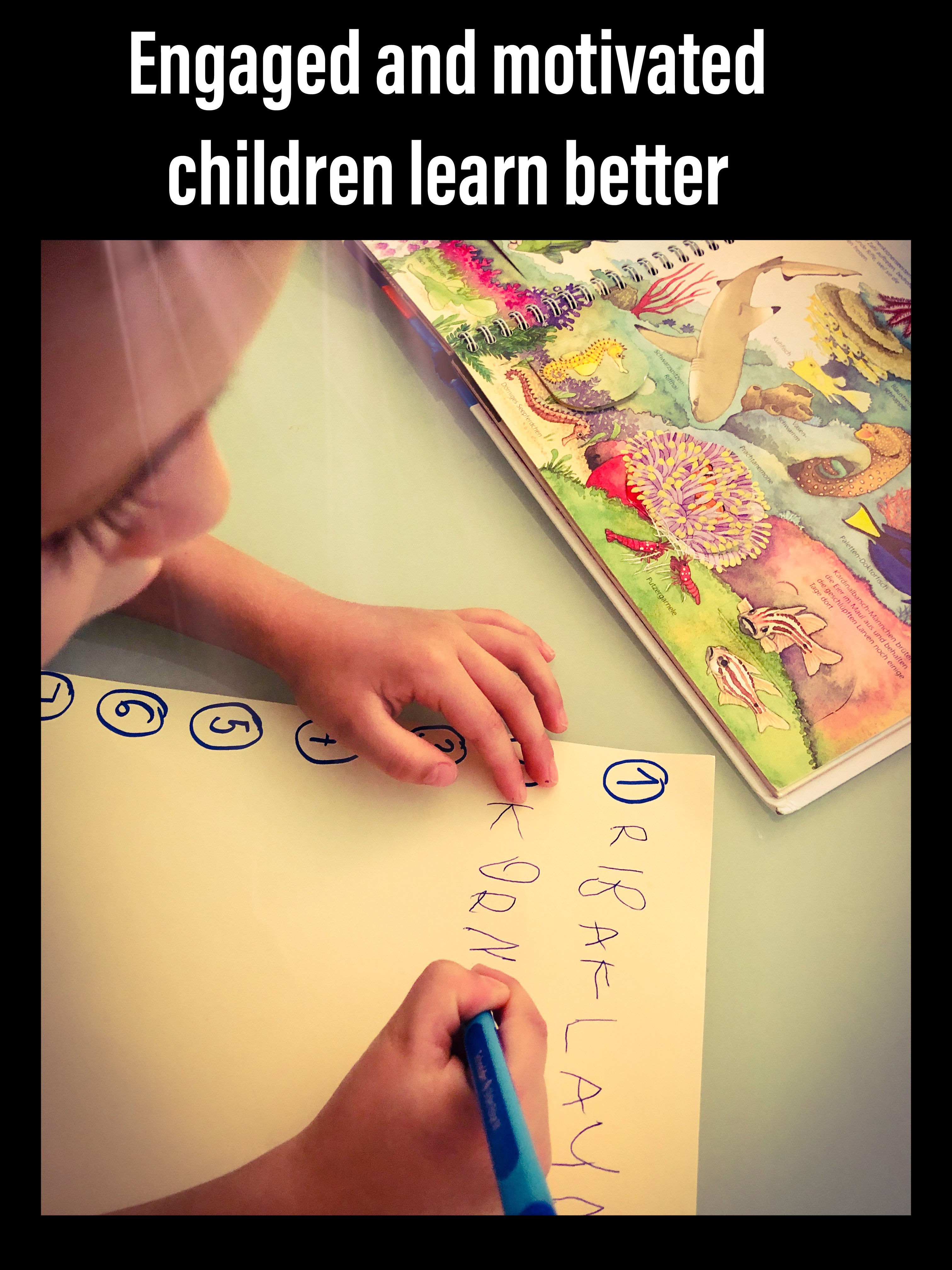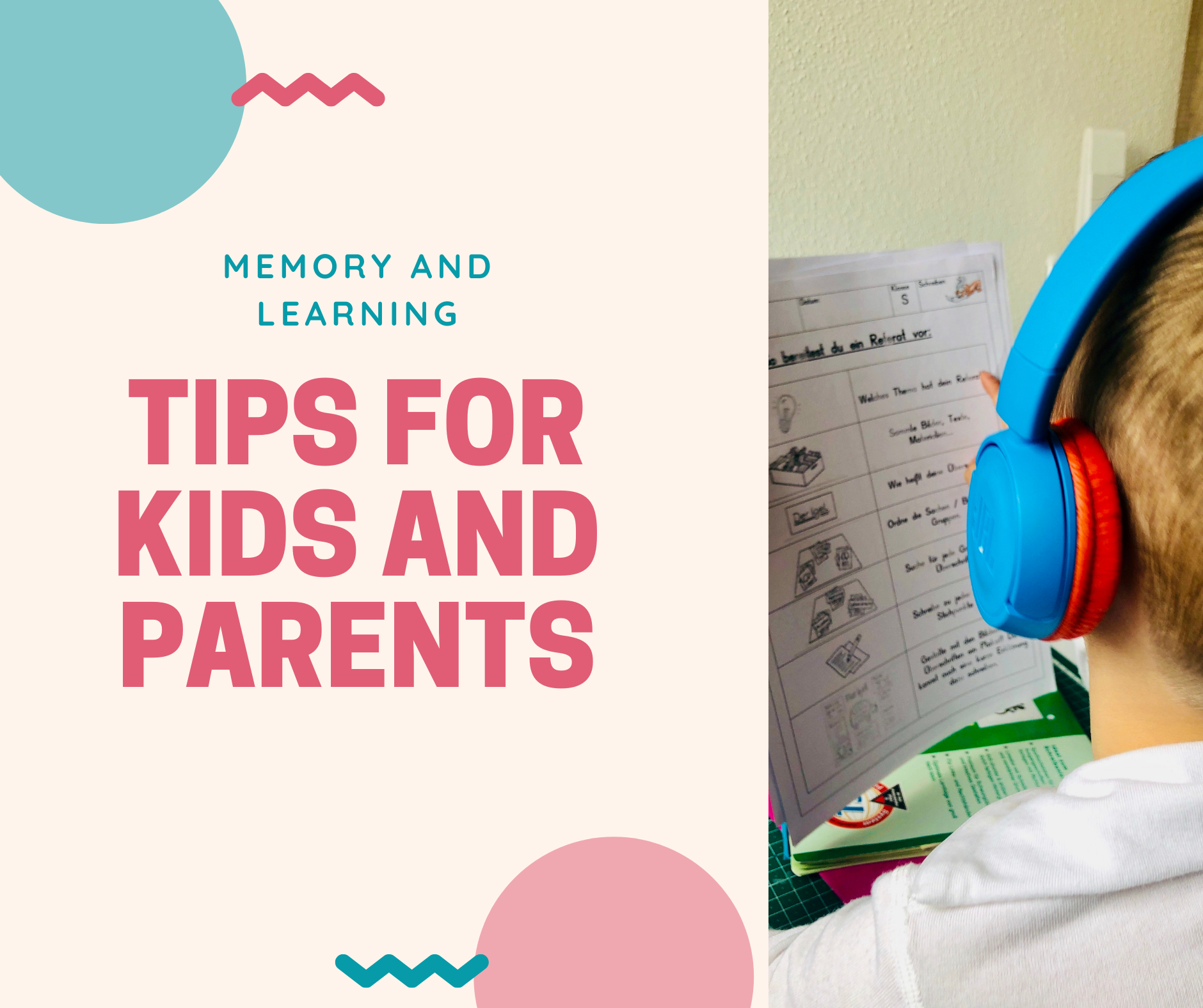How to Engage Children and Keep Them Motivated

As a parent, I've often come across a statement that motivation is vital to learning. As a teacher, this has been drilled into my brain.
It is actually a pretty simple mantra:

Or, it would be simple if there were some kind of a switch for motivation in their heads.
In reality, it's not that straightforward.
A few days ago I visited a friend of mine. She complained about her kids not willing to make any crafts and wondered how I got my kids to do so many different projects, arts&crafts. Later in this article, I'll share a few ideas for helping kids become engaged and motivated.
Spoiler alert: there is no universal "recipe", and not all approaches and activities will motivate all kids the same way.
But, first things first. What is motivation?
In short, we could say that motivation is a condition that activates and sustains behaviour toward a goal. It is critical to learning and achievement across the life span in both informal settings and formal learning environments. For example, children who are motivated tend to be engaged, persist longer, have better learning outcomes, and perform better than other children on standardised achievement tests (1).
(In this text, children who are still at kindergarten or pre-school are considered learners. Children learn every day in both informal and formal setting and it makes them - learners.)
Now, back to motivation. Without getting any deeper into explanations of this profoundly complex construct, let's just mention something called intrinsic motivation. When children do something without expecting any external rewards, we talk about intrinsic motivation. In intrinsically motivated people, the reasons for doing something come from the inside. We read because we like reading. We learn because we want to know more. On the other hand, extrinsically motivated children (and adults) act because they are expecting a reward (screen-time after completing a task, good grades for a successfully finished project), or want to avoid negative judgements.
So, why is intrinsic motivation important?
Some key findings from decades of research (1) on motivation to learn tell us that:
- Intrinsic reasons for learning may be more powerful than extrinsic ones.
- Children and adults who focus mainly on their own performance (extrinsic motivation) are less likely to seek challenges and persist than those who focus on learning itself (intrinsic motivation).
- Learners who have intrinsic motivation to learn tend to set goals for themselves and regard increasing their competence to be a goal.
Another thing associated with positive academic and cognitive outcomes is engagement. This concept refers to the degree of attention, curiosity, or interest children have when doing something. When your child doesn't hear you calling them because they are so deep into reading or building a railway, you can say that they are highly engaged.
So, it sounds pretty straightforward. Right? Just motivate them, and they will learn better and remember more. (Un)fortunately, theory and practice are not always (read: almost never) compatible.
How does it work in practice?
Ok, when we talk about very young children, they are practically entirely intrinsically motivated. Children are born with an innate curiosity to learn about the world around them and interact with their environment. These interactions lead to learning (2).
However, by the time many children reach school, much of their intrinsic motivation has been lost or replaced with extrinsically motivated learning.
How can we motivate our children once their innate intrinsic motivation starts wearing off?
It's not like you come home from work and say "Hey, kids! Let's make some crafts!", and they run towards you enthusiastically waiting for their assignments. Most kids don't come after school and ask their parents to give them tasks to practise math.
Here are a few ideas:
- Draw them in. In our case, ideas usually come from stories and books. My kids, Einstein E and Power P, love reading and storytelling, and this is what we use to spark their interest. Guess what the boys wanted to make after reading a book about Mozart and Robinson, two mice who wanted to fly to the Moon and decided to build a rocket? Yup, we used and reused a few toilet paper rolls, paint, and paper to make this DIY rocket. And after we read books about coral reefs? We made some animals that live there. The love of reading motivated them to learn to read. Every single activity can be turned into a spark. Visiting a museum, going hiking, watching the stars and talking about constellations...
- Don't forget to share your enthusiasm. Be dramatic. Read and tell stories using different voices, whisper and be surprised.
- Make activities purposeful. Honestly, Einstein E and Power P are not the biggest fans of creating "aesthetically pleasing" crafts. They prefer building, constructing, and any kind of physical activities. But, aunty's birthday is a great motivation to paint a few flowers or make a necklace. These gifts still wouldn't fall into the category of artistic or aesthetically pleasing, but they made them. And they loved the process because they saw the purpose.
- Personalise. Sometimes the spark of motivation begins with a meaningful alignment of a child's interest with an assignment or other learning opportunity. During one of our parents' evenings, the teachers told us a story of a boy who didn't want to learn how to write in cursive. So, they directed his love of telling stories towards writing, and by the end of that school year, he had written dozens of stories in cursive. Do you have a kid who doesn't like math and finds addition and subtraction difficult and dull? Counting pocket money they've been saving for a toy can be a great way to practise some mathematical functions.
- Questions. Teaching children how to ask questions and look for answers is precious. Right questions can stir up interest and arouse curiosity (you can read more about the importance of questioning here).
(1) National Academies of Sciences, Engineering, and Medicine. 2018. How People Learn II: Learners, Contexts, and Cultures. Washington, DC: The National Academies Press. https://doi.org/10.17226/24783.
(2) Carlton, M.P., Winsler, A. Fostering Intrinsic Motivation in Early Childhood Classrooms. Early Childhood Education Journal 25, 159–166 (1998). https://doi.org/10.1023/A:1025601110383

